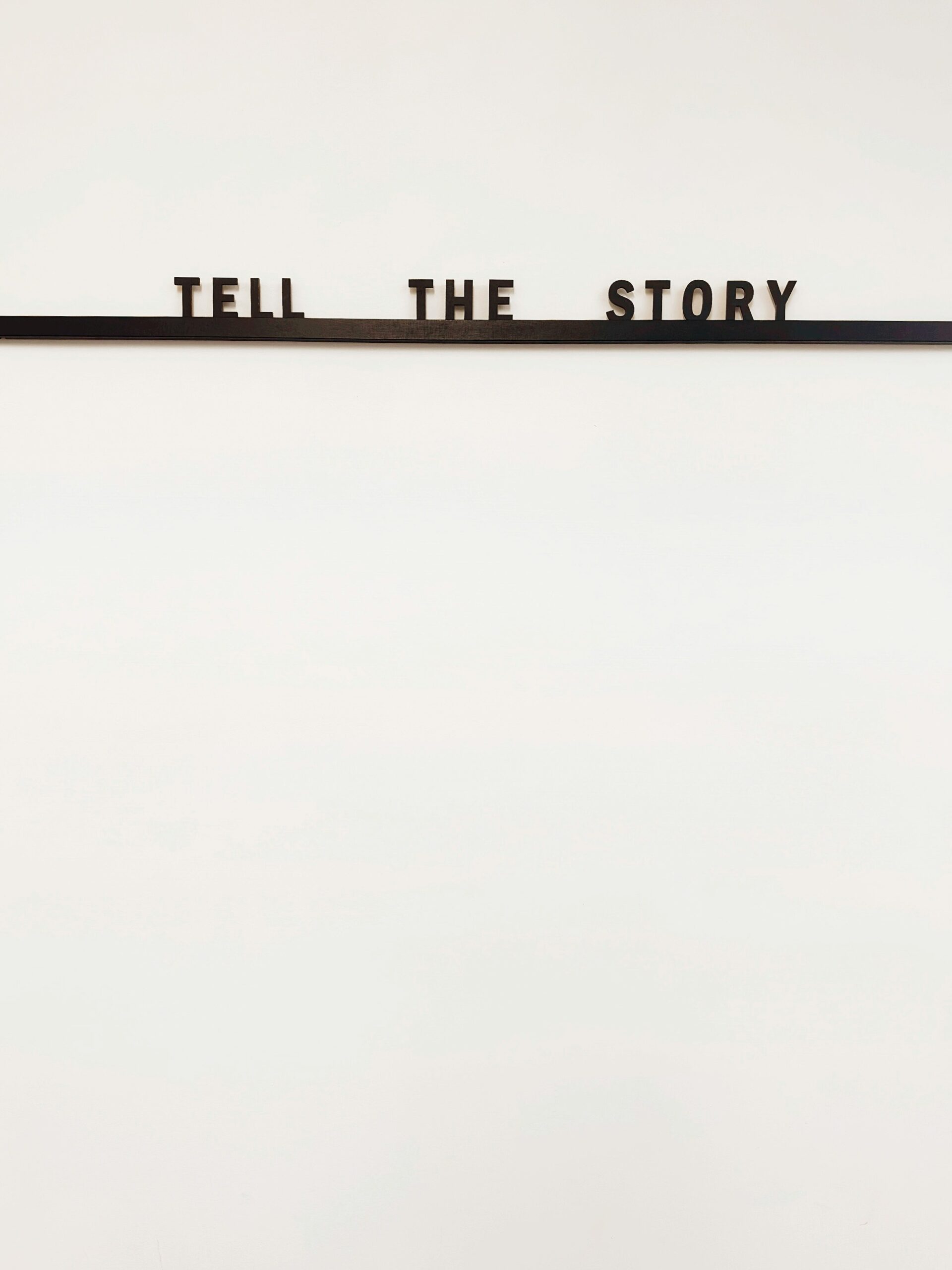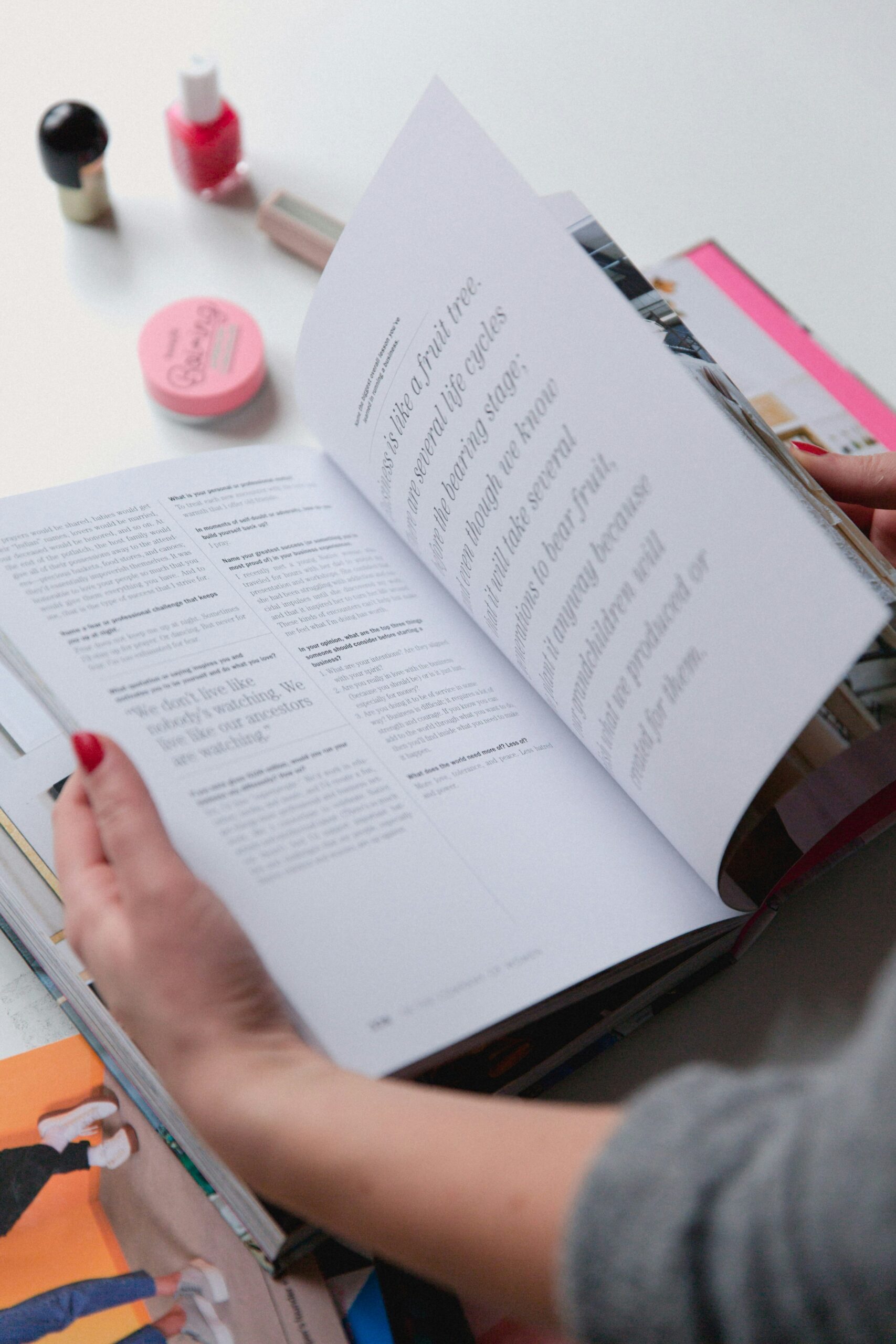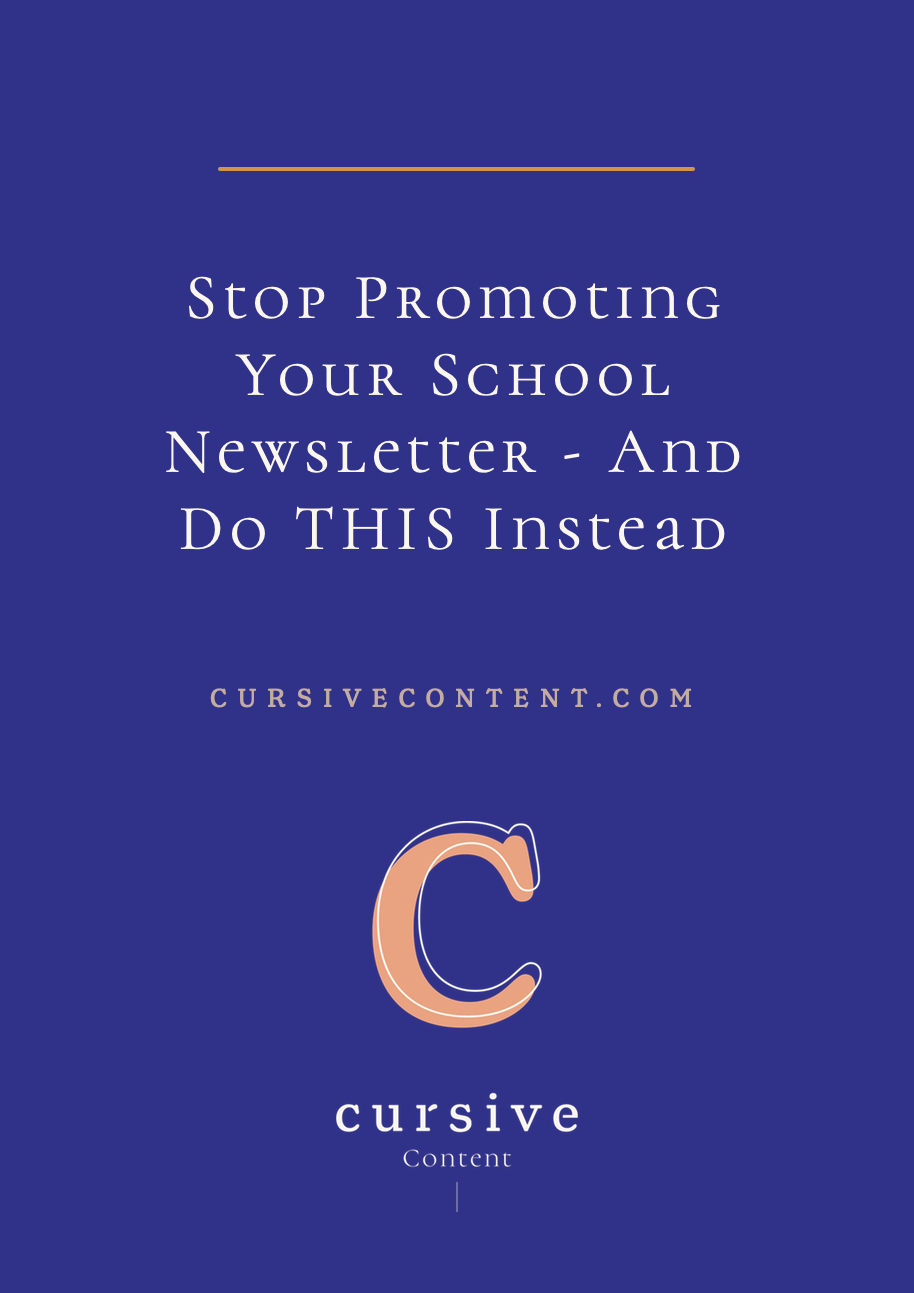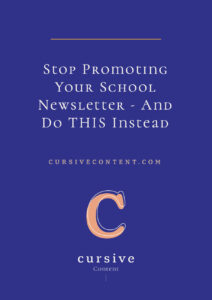Stop Promoting Your School Newsletter — And Do THIS Instead

When my daughter gets home from school, her backpack is always bursting at the seams. In it, I find:
- Approximately 1,000 sheets of paper, each filled to varying degrees with drawings, jumbled words, cut-and-paste letters or (gasp!) notes of adoration from a certain persistent little boy
- Her empty lunchbox
- Discarded clothing
- A homework folder containing recent work and (occasionally) a two-sided sheet of paper labeled “School Newsletter”
All of the above gets thrown in a pile. This pile is sometimes — but not always — revisited. And I’ll tell you right now, the Newsletter is on the bottom of that pile.
Here’s why:
- It rarely has anything to do with my kindergartener. Most of the notices are for older grades.
- It’s often outdated.
- It’s crowded with so much information it gives me an instant headache.
On the rare occasion I decide to seriously peruse the newsletter, I scan it quickly looking for her teacher’s name or her room number. If I don’t see either, I toss it. (In the recycling bin, people! I’m not a TOTAL monster!)
The main point of this rant:
No one wants to read a school newsletter — printed or otherwise — for many legitimate reasons.
The second point of this rant:
This doesn’t mean no one wants to read the CONTENT of the school newsletter. And that’s an important distinction.
Think about it: a newsletter is simply a compilation of various stories, highlights or articles that fit together because of their timeframe. They all happened around a certain period of time, and therefore are all deemed newsworthy — regardless of the content of their stories.
This means that in most school newsletters, recipients are getting content that is both relevant and completely irrelevant to their needs and interests. And it is up to the READER to do the hard work in deciphering which is which.
It should not be the reader’s job to find the content that interests him or her — that’s our job as marketers and communicators.
And that’s what’s wrong with newsletters. They’re a mish-mosh. They’re an everything pizza. They’re an overwhelming, under-read, outdated practice.
Unfortunately, school newsletters are usually hiding really good and important content in their midst. But because they’re such a content jumble, the intended audience often misses the good stuff.
So what can you do to promote your content instead of your newsletter?
#1: Create targeted email communications.
By spending time getting to know your subscribers, and tracking the content they’re interested and not interested in, you can create different audience segments for different messages.
This way, you can send the kindergartens the latest update on the art fair, and the fifth graders the information about the spelling bee. You can make sure the right people don’t miss an important message.
#2: Focus on one message per email.
It may sound scary, but it’s OK to send out MORE emails to your audience — as long as the content of each email meets that audience’s needs.
In each email you send, focus on one story or one update. Don’t crowd it up with a million calls-to-action or links. Keep it simple. Let the audience know what you want them to know, and include a way for them to continue the conversation.
#3: Be conversational.
Now that we’re not creating “newsletters” anymore, it’s OK to get more personal with our content. While you want to write in your school’s voice and tone, you also want to communicate with your community in a real and valuable way.
So get real! Add emotion to your message. Prompt readers to continue the conversation on social media or simply by responding to your email. Don’t be so standoffish. In all of your communications, you want to build relationships — and your newsletter content is no different.
Want more ways to improve your school’s email marketing? Read this: Quick Tips: 4 Ways to Improve Your School’s Emails Right Now
MORE ARTICLES
-
 Clarity in 50 Words or Less: How to Write Your School’s One-Sentence Story
Clarity in 50 Words or Less: How to Write Your School’s One-Sentence Story -
 The 4 Building Blocks of a Strong School Story (and Why AI Needs Them)
The 4 Building Blocks of a Strong School Story (and Why AI Needs Them) -
 How to Stop ChatGPT from Making Your School Sound Generic
How to Stop ChatGPT from Making Your School Sound Generic -
 What Should Your School Do with Its Blog Now That AI Is Changing Search?
What Should Your School Do with Its Blog Now That AI Is Changing Search? -
 What Is Your Private School’s Bold & Unifying Big Promise?
What Is Your Private School’s Bold & Unifying Big Promise? -
 Viewbook Best Practices for Private Schools
Viewbook Best Practices for Private Schools -
 AI Writing Prompts to Power Private School Storytelling
AI Writing Prompts to Power Private School Storytelling -
 When to Outsource Your Private School Content Marketing to an Expert
When to Outsource Your Private School Content Marketing to an Expert


Emily,
I agree that most newsletters are not read and have info that is both relevant and irrelevant. I like your targeted email idea.
But we are a preschool – grade 12 school. Who would write all of these emails? What about one email to the entire school with links to particular grades?
Thanks
Sally
Hi Sally — really good question. First, shift your mindset away from newsletters in general, and instead, look at the content you’re sharing as individual stories. If the story is of interest to the whole school, send it to the whole school. If it’s only for grade 12, send it to grade 12 parents. It’s OK to send out correspondences more frequently and not wait until you have a bunch of stories to share. People don’t mind getting more email, as long as it’s email they deem valuable.
This way, you’re still creating the same amount of content (and not individual newsletters for each grade!) but simply segmenting it.
I hope that helps! Let me know if you have any more questions or want to dive deeper into it.